|
 
| |
OF ARNAVUTKÖY
THE DOCUMENTARY OF ARNAVUTKÖY
Introduction
-
Located on the European shores
of the Bosphorus between Kuruçeşme
and Akıntıburnu,
Arnavutköy
is one of the most important historic villages of Istanbul, which has always
had multi-ethnic population since Greek community firstly inhabited it in
the 4th Century. Although
modernization movement in cities influenced this suburban neighbourhood, it
succeeded to retain its architectural and historic fabric to a large extent.
On the other hand, big
migration of its Senior Citizens to their homeland in recent years results
in some small changes in Arnavutköy. To learn more about how the dwellers of
Arnavutköy are affected recently, the citizens from different ethnic groups
who resided most of their lives in the neighbourhood were interviewed by
asking them to recollect about themselves, their daily lives and to tell the
difference between the past and the present in Arnavutköy in terms of their
relationships, problems, social lives in the presence of the research group
with a video camera.
-
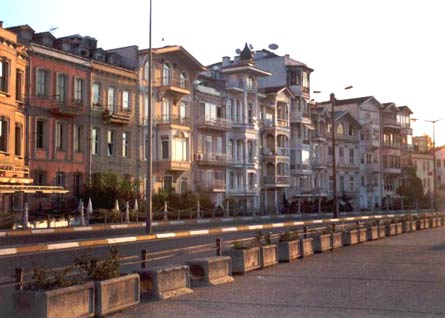
-
The history of Arnavutköy was
started with the first settlements of Greek community in Arnavutköy in the
4th Century with its first name: Hestai.
After that time this neigbourhood took the
names Promotu and Anaplus respectively. Due to the fact that
the stream in Bosphorus gets the highest degree from the Black Sea to the
Marmara Sea near the shore of village, the place was called Mega Revma,
which means big stream in Roman dwellers’ time. The present name of the
place is emerged after the conquest of Istanbul by the Ottoman Empire in
1453. The name
Arnavutköy is derived from the fact that the Conqueror Sultan Mehmet
resettled the place first by Albanian people in 1468.
-
Another point that makes
Arnavutköy remarkable is that it used to be famous for its fragrant
strawberry, woods, orchards and marked gardens in the past however it is
still one of the greenest places on the Bosphorus with a picturesque
atmosphere with its architectural and historic fabric such as Yalis
and churches.
ARCHITECTURE
Houses
-
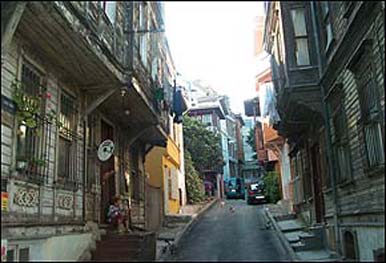 Arnavutköy, is a town that has
been able to protect its architectural identity against the mercilessness of
the history. With wooden houses on the shore way, Arnavutköy gives visitors
some clues about the architectural variety of the Ottoman Capital.
Because of the big fire in 1887, many of the
constructions were demolished. Altough almost all of these houses are Greek
houses, very few of them resemble the Greek character that we see in Athens
and Agean islands. Like
the Greeks in Istanbul, Greek people in Arnavutköy have prefered the style
of the last period of the Ottoman Empire. Arnavutköy, is a town that has
been able to protect its architectural identity against the mercilessness of
the history. With wooden houses on the shore way, Arnavutköy gives visitors
some clues about the architectural variety of the Ottoman Capital.
Because of the big fire in 1887, many of the
constructions were demolished. Altough almost all of these houses are Greek
houses, very few of them resemble the Greek character that we see in Athens
and Agean islands. Like
the Greeks in Istanbul, Greek people in Arnavutköy have prefered the style
of the last period of the Ottoman Empire.
-
An apartment house named “K.
Stavridu” that was built in 1921 by G. Kovvas, is one of the
first apartment houses in Arnavutköy.
Taksiarhis Church
-
Before the conquest of Istanbul, this church
that was outside the city walls, was destroyed because of the skirmishes
around the city. In 1452, for the building of the fort, some stones of the
destroyed church has been used.
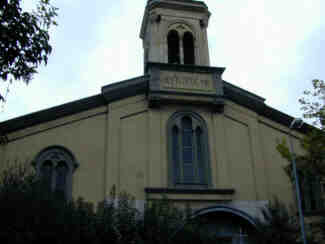
-
Thanks to an inscription that is on the
right out wall of the church, we realize that the church was repaired by a
man called Manuel from the Epir’s city Kastorya. Church was on
fire two times in 18th century. A year after the repair in 1796, it was on
fire again with the trees in its yard. People spent 77249 Turkish piastres
to repair it and in February 1798 it was ready for the worship but after a
while the church was on fire again. By the support of the Sultan Selim,
the church was rebuilt but because of the economic problems it was not
completed until the middle of the 19th century. In 1834 and 1845, the town
people repaired the church and the great earthquake destroyed the church
badly in 1894.
Therefore, between 1895-1899 Greek people in Arnavutköy helped as much as
they could in order to repair it. The
church, that was symbolizing the big population and economic power of
Greeks, was one of the biggest Greek churches in Istanbul.
-
The wooden entrance of the
church was added by the economic support of the Bostancıoğlu
family. At the left side of the main
entrance door, there is a fountain with 3 taps and a marble storehouse that
have been built in 1964 by the Ayios Trifonos Brotherhood Association
and attributed to protector of the gardeners Saint Ayios Trifonos.
Kostaki Pasha and some people from his family are lying under the
church.
Profiti Ilias Church
-
The second church of Arnavutköy
is surrounded with great plane trees on a hill.
This church was built by the architect
Pashalis in 1871. It has a small dome and in its yard, there are three
monumental graves.
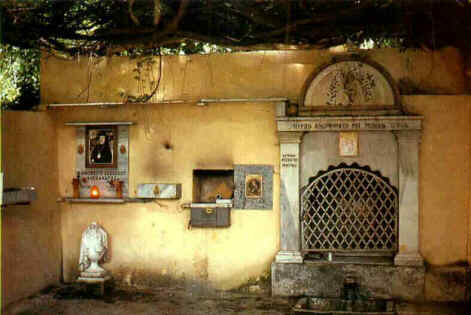
-
At the left side of the main entrance door,
there is Profiti Ilias Ayazma that is known as Great Ayazma by
Turks. That ayazma is famous with its healing water.
In the past every year in July
20th, Greeks from different places were visiting the ayazma and
donating big amounts of money to Arnavutköy Greek Congregation because of
the Profiti Ilias Chiristian Feast.
-
In July 1948, Apoyevmati Newspaper announced
that because of the Profiti Ilias Fair, the country musichall near the
church will be ready to serve visitors fresh fish, mussel, cold beer, cold
and hot appetizers. It is believed that at that time visitors’ crowd
streched from hill to the town center. After 51 years, in 1999, at the
Profiti Ilias Chiristian Feast there were 50-60 people and at the same
country musichall there were 5-6 table for customers.
Tevfikiye Mosque
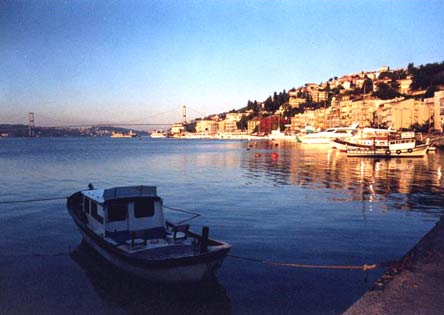 The mosque, that is on the
Arnavutköy-Bebek road and has a view of Akıntıburnu, was built in 1832 by
Sultan Mahmut with the barracks (police station now) near it.
This small mosque has a rectangle plan and
single minaret. It is interesting that this mosque was built while very few
Muslims were living here. It
is likely that, during the 1821 Mora Rebellion, because of the Arnavutköy’s
connection with Russia, Eflak and Boğdan
Sultan has built a mosque. The mosque, that is on the
Arnavutköy-Bebek road and has a view of Akıntıburnu, was built in 1832 by
Sultan Mahmut with the barracks (police station now) near it.
This small mosque has a rectangle plan and
single minaret. It is interesting that this mosque was built while very few
Muslims were living here. It
is likely that, during the 1821 Mora Rebellion, because of the Arnavutköy’s
connection with Russia, Eflak and Boğdan
Sultan has built a mosque.
The Bath
This bath that is between the
Boyalı Köşk Street and Abdülhak Molla Street
was ruined in 1930. At present, there is
only a remnant of the bath.
Behind the bath, there was Grand
İzzet
Mehmet Pasha’s villa and
in front of the bath there was poet Faruk Nafız Çamlıbel’s house.
Fountains
The oldest one in Arnavutköy is the
İzzet Mehmet Pasha fountain that was built 1791 and is on the street
behind the Mosque. Beyhan Sultan
built the second one that was on the Akıntıburnu in 1804. This marble fountain
has 3 troughs.
FIRES IN ARNAVUTKÖY
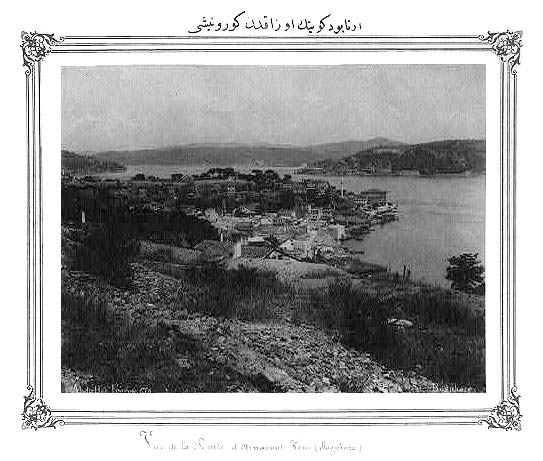
-
As Özden Danışman, who is one
of the people we have interviewed, says; “In Arnavutköy, because of the
component of houses, a quick interference is a must otherwise a house will
be burned in 5 minutes.” This situation caused several great fires in
Arnavutköy throughout the history.
-
In his book “Istanbul
Firemen”, Reşad Ekrem Koçu mentions two great fires in Arnavutköy
in last 200 years. The first one
occurred in 1798 and all waterside residences burned. The second one burned
109 buildings in 1908.
In his book named “Istoria Tu Megalu Revmatos-Arnavutköy”,
Iliopolis
Metropoliti Yennadios
writes that a greater fire occurred in 1887 April 11th.
In a newspaper named “Oriental Adviser
- Moniteur Oriental”. Event was described like this:
-
“Great fire in Arnavutköy.
In Arnavutköy, on past Saturday night at ten o’clock, the fire started and
spreaded immediately because of wind.
The fire started because of the fact that a
gas lamb fell over in house of a man called Yako.
After the fire, that continued
burning for 5-6 hours, all Arnavutköy ruined with 450 houses and 250 shops.
Despite the greatness of the fire,
only a man got hurt.”
-
In the same newspaper next day, these
were added:
-
“It is learned that the majority of the
burned houses’ owners are Greeks and 800 family lost their houses.
Approximately 40 houses that belong to Jews were burned too.
By the order of the Sultan, 500
tents 3000 okes of food were sent to Arnavutköy.”
FISHERMEN IN ARNAVUTKÖY
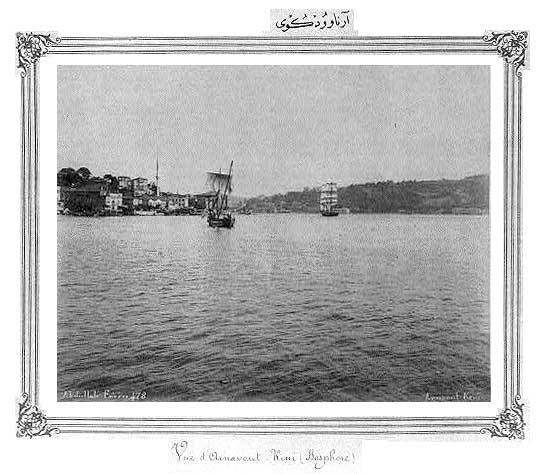
Once upon a time, Arnavutköy was
famous with its mackerel, large bluefish and large Bonito. Akıntıburnu was full
of fishermen, but we polluted the sea and make it offended by us. At present,
there is not much fish and any professional fisherman on the shore, but there
are only some fishing-lines. Especially fishermen from the Black sea are guilty,
because they hunted untimely and used trawl.
THE HISTORY OF ARNAVUTKÖY
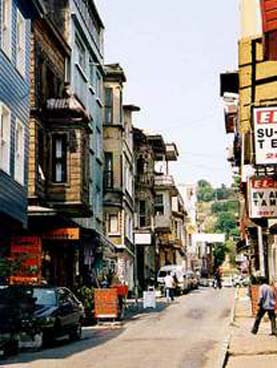
-
Greeks who had come from
Megara and Argos to settle the place in the eras that Arnavutköy
was called Estia or Mihailion constituted the first folk of
the village. After Istanbul’s Conquest by Turks, city’s population decreased
so families who were brought from Albania were made to settle in Arnavutköy.
These Albanians have become
Christians and Greeks in time.
-
In the middle of the
Seventeenth century, Evliya Çelebi described Arnavutköy in this way:
“There are houses with vineyards and orchards, these all belong to Greeks
and Jews. There are no mosques, small mosques or “imaret”s. Muslim
congregation is quite small”.
-
In Eighteenth century
İnciciyan wrote down that all the population in Arnavutköy was Greek.
-
After eighteenth century, a small Armenian
community have lived there more than 200 years.
In the middle of 1930’s the
small Armenian primary school of Arnavutköy was closed because of the
insufficiency of students. In Arnavutköy, before World War I, 342 Armenians
were living with 5973 Greeks.
-
Not as crowded as other
quarters of Istanbul but Jews have always lived in Arnavutköy. There are
some written records that belong to seventeenth century, about the
settlement of Jews in Arnavutköy.
According to the records, Jews were existent since 1654. However, after 1887
fire a large number of Jewish families immigrated to other counties.
Before World War I, there were
32 Jews living in Arnavutköy.
-
Before the Mora Uprising,
Greeks were worried because of the works and secret meetings in opposition
of Ottoman Empire then they moved from Arnavutköy.
-
According to nineteenth century records all
waterside residences belonged to Greeks bar one or two exception. After the
Mora Uprising in 1821, these waterside residences were confiscated and sold
to Jews. In the late 1800’s Muslims started to settle down the places that
were emptied before because of the fires in the village.
-
In World War I years, Greek
population of Arnavutköy exceeded 6000.
After the war, this number started to
decrease and finally went down to half because of migration and the changes
of people’s dwelling.
-
Greeks have emigrated to Greek as a result
of Sixth and Seventh September Events, 1964 Decree and 1974 Events. Only
about 50 or 60 people who are generally old stayed in.
THE
NIGHT OF 6-7 SEPTEMBER OF 1955
-
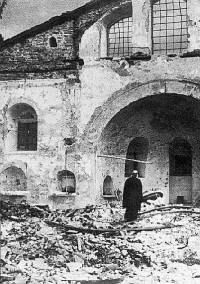 After 1940’s, although from time to time
there were problems, which stem from the cultural differences between the
families who emigrated from Black Sea Region and whose origin is rural and
the families who are settled Greeks and Christians, until 1955 no serious
events happened. 6-7
September events, which were the most serious disasters that Greeks have
ever faced with, have also affected Arnavutköy people deeply, too. In these
days in Arnavutköy where 600 Greek families were living, looters damaged the
neighbourhood badly; they devastated shopping centre, houses, automobiles
and churches. From time to time
Greeks resisted thus events became more violent. After 1940’s, although from time to time
there were problems, which stem from the cultural differences between the
families who emigrated from Black Sea Region and whose origin is rural and
the families who are settled Greeks and Christians, until 1955 no serious
events happened. 6-7
September events, which were the most serious disasters that Greeks have
ever faced with, have also affected Arnavutköy people deeply, too. In these
days in Arnavutköy where 600 Greek families were living, looters damaged the
neighbourhood badly; they devastated shopping centre, houses, automobiles
and churches. From time to time
Greeks resisted thus events became more violent.
-
A 77-year-old bedridden woman was wounded by
an iron, which had hit her head. After two days, she died in the hospital,
where she had been taken for treatment.
-
Arnavutköy Greek Community’s
72-year-old religious leader, who had lived in Arnavutköy since 1920’s, was
exposed to insult and he was pushed down from the stairs of his home.
After these events he would not recover,
after about 6 months he died.
-
A 400-year-old valuable icon, which was in
Taksiarhis Church that was completely destroyed, had been broken and then
was thrown out.
-
Asadur Zovikoğlu
and Uncle Tahsin are the eyewitnesses of the grievous events. As an
eyewitness Uncle Asadur’s recollections areas follows:
-
“I lived Sixth and Seventh September
Events. I was in my shop until 4am. Only front shop window of my shop was
broken. I never forget I had bought lots of material because schools would
be opened. I thought ‘if these are destroyed, where can I find the capital
again.’ A member of army which has just retired came and said ‘don’t come
closer’ at that night at the time which looters came to break my shop, then
he fired two shots, they went. I thanked him very much. I’ve never forgotten
him.”
-
As another eyewitness of the events Uncle
Tahsin said:
-
“Sixth and Seventh September events
occurred. I looked out and saw there was no shopping centre, no tradesman.
Looters, dishonourable people destroyed, broke all things. Government paid
all the cost. We protected Greeks but we couldn’t hold their own. A crowd
came, they were holding clubs in their hands, broke whatever they came
across. They
destroyed all shops because there were many Greek tradesmen in Arnavutköy.
We saved one or two shops with
difficulty.
-
This was a scheme of the Government. The
government created a disagreement because it was to their interest. We
mustn’t let these done, that crowd mustn’t be increased. People started to
immigrate. Self-seekers designed the events, planned everything. After the
events they sold all houses.
-
There are residents who immigrated after the
events. Immigrants died because of pain. They are treated badly; they are
looked down on the place they went. However I don’t expect them to come back.”
-
After the tragic events,
Arnavutköy Greek Community told that some Turks had tried to protect them
but some had showed their homes and shops and helped to the raiders by this
way, with grief.
-
At the end of these events
Greek population have lessened continuously in Arnavutköy.
ASADUR ZOVIKOGLU
-
“If there is a special
quality of mine, it is the fact that I have been here, in Arnavutköy, since
1924, I worked in my coffee shop from 1959 to 1998 so because of these
things everybody knows me. I
am called ‘the walking history of Arnavutköy’.
-
Everybody used to shop at in my store. The
merchandise of my shop was various. School materials, fuel, drinks,
cigarette, newspapers were sold.”
-
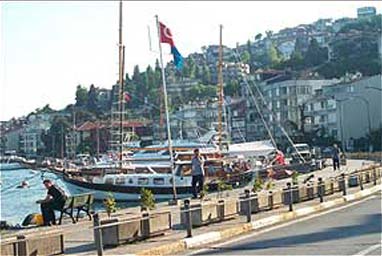
-
These words belong to Asadur
Zovikoğlu, who is an old resident of Arnavutköy.
-
According to an interview that was made in
1998 the life history of Asadur Zovikoğlu is like that:
-
Since 1924 that was his birth
year, Asadur Zovikoğlu hadn’t left Arnavutköy that he characterizes as ‘our
village’. Erzincan Kemah is his
family’s place of origin. At the beginning of the Nineteenth century his
father Apraham and grandfather Asadur emigrated from Pekeriçi village of
Kemah to Istanbul. They rented a shop and started keeping a coffee house.
-
In the shop, which was near to the Greek
school, notebooks, pens, pencils, marbles, caramels, chewing gums were sold
in addition to coffee. Water and coal were also sold in the shop. In the
quarter that had a small population, a few shop used to meet all needs.
-
Asadur grew in a wooden house that was near
the coffee shop.
Starting nursery school that was called Mangabardes, firstly he was educated
in Arnavutköy, then Ortaköy and Beşiktaş.
In 1946, at the end of war years, he
graduated from a high school in Karaköy. He did his military service as a
reserve officer in Erzurum. When he turned back he continued to serve with
his father in coffee shop. Actually Asadur wanted to deal with machinery
work, for a time he worked in a turner. He was curious about machinery but
when his father got old he took over the shop compulsorily.
-
Between 1959 and 1998, Asadur Zovikoğlu
operated the coffee house that was opened in 1920’s.
-
Asadur Zovikoğlu has said in an
interview that he gave before: “In the past there were not as many people
as there are now in Arnavutköy.
There were few tradesmen. Arnavutköy was
cosmopolitan. There were Greeks, Armenians, and Turks. Sometimes the French
and the English have lived here. All of them were like siblings. Candy
Bairam came, my father used to took candy to sub-district manager. When
Muslim Festival of Sacrifices came a lot of meat was sent to us, we used to
give some part of them to needy people that the people who had brought meat
to us didn’t know about”.
*
-
Uncle Asadur said that people who were from
various nations used to live together without any problem. They were living
like brothers and sisters. Everyone used to visit each other, congratulate
their bairam. There were Greeks, Armenians, and Turks in Arnavutköy. This
situation was replaced by others in time, different people came from
different areas. 50-60 % of people have immigrated because of many various
reasons. 20 class soldiers, Property Tax, Sixth and Seventh September Events
made people disappear. In fact all dwellers were likebrothers.
Many people who went to Greece
and settled there suffered for leaving Arnavutköy and when they came to
Arnavutköy, they looked for Arnavutköy people they brought presents for
everybody.
-
Village changes in time: “Greeks went
slowly, migrations started. Furthermore, Sixth and Seventh September events
occurred, their shops were destroyed. They didn’t have the opportunity to
open a shop again so they started to migrate; they sold their houses for low
prices. Newcomers want to apply their own training here but we cannot adjust
the situation.” *
-
The clearest thing is Uncle
Asadur’ s deep missing of Arnavutköy’s old people.
He doesn’t miss old life as much as old
people because he hasn’t forgotten the poverty and difficulties of daily
life. But he hasn’t
forgotten Arnavutköy people that he describes as a ‘family’. “There were
Greeks in Arnavutköy, there were less people, a village atmosphere was
existent. People used to come their
summer resort. Sea was spotlessly clean and shining, fish could be seen.
These people are absent now, man sorrows when he remembers.”
*
-
With the deep grief which non-existence of
the old village and the people causes, Uncle Asadur misses past very much
because of the fact that the better has not been done.
-
* İstanbul’da Hatırlamak ve
Unutmak, Birey, Bellek ve Aidiyet , Leyla Neyzi, Türkiye Ekonomi ve
Toplumsal Tarih Vakfı, Numune Matbaacılık, Beşiktaş/ İstanbul 1999 November
-

UNCLE TAHSİN
-
Uncle Tahsin is one of the old
residents of Arnavutköy. He came from
Maçka, which is a province of Trabzon. People who migrated from Trabzon used
to be coppersmiths, tinsmiths, or yorgancı. Actually Greeks leave these
trades to Turks.
-
When we asked what he missed from the old
days, he answered in the following way:
-
“Memories, my life in the past are always
in my mind. I was a child but I found pleasure in entertainments.
-
If only old tradesmen would be here, it
would be better. We were like siblings.
-
There is no peer of
Arnavutköy. It is unique. It is the
place which has changed less because there is not any new construction, it
is forbidden. Arnavutköy
is different!”
-
As it can be perceived Uncle
Tahsin also misses old Arnavutköy people, old life, old days very much.
-
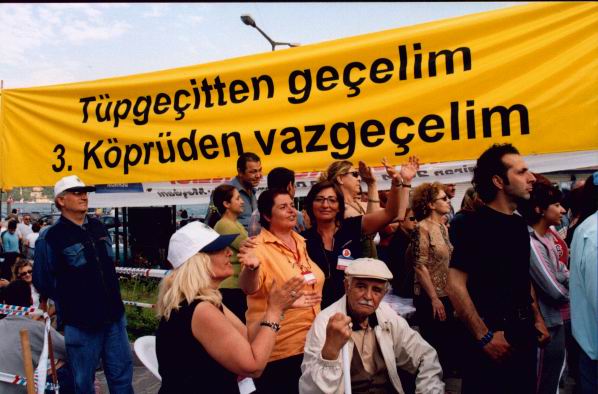
FROM
THE THIRD BRIDGE TO TUNNEL
-
One of the most distinctive
characteristics of Arnavutköy is its architectural structure and historical
heritage that have been being threatened by the third Bosphorus Bridge
planned to be built between Arnavutköy and Kandilli.
-
Ministry of Public Transportation claimed
that a third Bosphorus bridge will be an effective solution for the
transportation problems in Istanbul such as congestion in the roads ending
of the both sides of the Bosphorus Bridges and in 1998, the Highways
Department of the Central Government announced its plan to construct a third
bridge across the waterway. However, the construction of a third bridge is
far from being a solution yet a great source for possible future problems.
-
Inhabitants of Arnavutköy are
strongly against coming bridges not only in Arnavutköy but also in any place
in Bosphorus because they are aware of the dangerous facts, which they will
have to face when a bridge is built.
-
First of all, a new bridge
between Arnavutköy and Kandilli puts Arnavutköy’s cultural and natural
heritage in danger and also Kandilli’s beautiful scenic areas will be in
danger too. There is huge area needed to make the construction of a bridge
possible and this means that, if a third bridge is built in Arnavutköy, most
of the houses which are known as civil architecture, monumental
constructions, green areas and famous “yalı”s will be destroyed for the
bridge’s construction. The rest will
be in danger too because new viaducts, roads, little bridges linking to the
big one will be needed in time after the bridge is built.
There will be a great noise and
air pollution over the Arnavutköy and even the waters of Arnavutköy will be
negatively affected from the pollution carried by the bridge. It will be
extremely harmful not only for Arnavutköy and Kandilli but also for near
residential areas such as Ulus, Etiler and Levent.
-
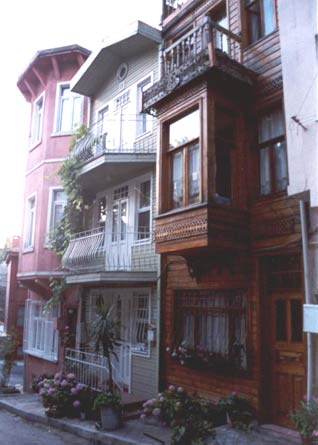
Arnavutköy Local
Initiative Group
-
Inhabitants of Arnavutköy
raised their voice for the first time before six years ago and they
established a local initiative group. The members are predominantly the
dwellers of Arnavutköy.
Özden Danışman
said that they, the dwellers of Arnavutköy, decided to do something about
the coming disaster and became a group in one night. For instance, the
tailor, the fruit saler, vegetable man, butcher, coffee saler, baker,
pharmacist, shoe maker of Arnavutköy and even the old people are in this
initiative group, just to save their neighborhood.
They are trying to do anything they can;
they contribute to the group facilities as well as they can.
Özden Danışman, İsmail
Üstun
and Nejla Osseiran said, “This is a work willing”. People of
Arnavutköy are meeting on every Sunday in Arnavutköy’s traditional coffee
houses and they are organizing fairs on the Arnavutköy waterfront. They are
inviting famous singers, writers, showmen and journalists to contribute to
Arnavutköy’s facilities. They are making research on history of Arnavutköy,
the possible damage that will happen to Arnavutköy when a bridge is built
and laws that do not allow bridges to be built in Bosphorus, they are
sending these research projects’ results to the newspapers, magazines,
television channels and other publication organs.
-
Arnavutköy Local Initiative
Group’s aim is to make people of Istanbul aware of that our cultural and
natural heritages are at risk and if we don’t do anything to prevent, sooner
or later, they will be destroyed. Another aim of Initiative Group is to make
government and other linking ministries aware of that Arnavutköy is not
ownerless and people of Arnavutköy and Istanbul will not let anything such
as a bridge to harm their neighborhood and Istanbul.
-
This kind of a local
organization is brand new for Turkey because before Arnavutköy Local
Initiative Group exists, there were no organizations like this.
-
Arnavutköy’s initiative is the
first movement, which is local and very effective to voice themselves to the
other people of Istanbul and to express their thoughts and concerns about a
specific subject.
Third Bridge Is Not a Solution
-
There have been many people who refused the
third bridge by emphasizing some facts about the two bridges over the
Bosphorus. Generally, these facts were representing that the third bridge
would not be a solution to the traffic problem in Istanbul.
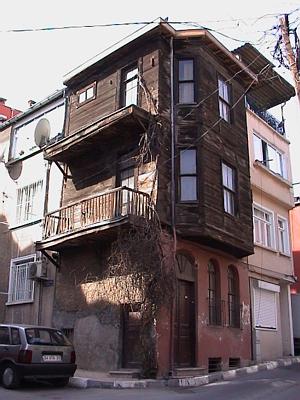
-
Mete
Örer
(Transport Expert and a former Deputy Undersecretary of the Ministry of
Transportation, 2003) told that while the city roads on either end of the
bridges were as congested as they were, a third, a fourth, even a fifth
bridge would do no good. This meant
more bridges and highway transition would bring more cars into the city and
more cars would necessitate more bridges.
-
According to data collected by
Prof. Dr. Güngör
Evren, since the
inauguration of the Bosphorus Bridge in 1973, the number of vehicles crossed
the bridge increased 14 times when the number of the commuters increased 2.5
times. This was the indication of the
fact that these bridges served the cars instead of people. However, the aim
is to ease the transition of commuters instead of transition of vehicles.
-
Besides those that Mete
Örer
and Prof. Dr. Güngör Evren fixed, traffic accidents on bridges also
indicate the weak aspect of bridges, obviously.
That is, although it is thought that bridges
are necessary to ease traffic congestion, accidents on bridges reverse this
thought because they cause more congestion. For example, a few weeks ago o
lorry crashed the Bosphorus Bridge, both there was congestion and the bridge
was damaged.
Tube
Pass
-
As a way of preventing the third bridge, a
new project was proposed: The only long term solution to Istanbul’s traffic
problem is an underwater tube crossing between Sirkeci and Harem, moving
more people not more cars. Many millions of dollars had been spent on
preparing this project, which was not only feasible but could carry twelve
times more people than a bridge.
-
What are the properties of the proposed
underwater tube pass? The tunnel, which will provide a fast crossing between
the two sides of Istanbul, will be 1.80 km long and maximum speed of trains
will be 100 km/hour. It will be built between
Üsküdar
and Sirkeci. In addition
to this, the suburban railway lines between Sirkeci and Halkalı and between
Gebze and Haydarpaşa
will be improved. Thus, the number of
commuters will increase from 10.000 to 75.000 due to the fast and safe
transportation. In this
way, the underwater tube pass project is the necessary solution so as to
provide the mass transportation and crossing the Bosphorus as they give
close attention to protect the historical and natural beauty of
İstanbul.
-
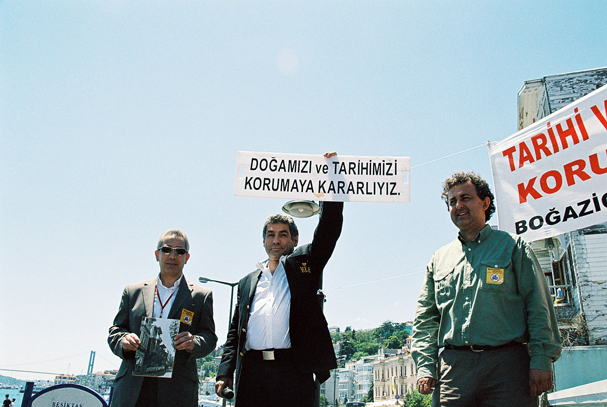 However, there have been some concerns about
whether the proposed tunnel is safe during the possible earthquake in
Istanbul. Although the authorized people in the Ministry of Public
Transportation responded to the concerns as they expressed that it could
resist an earthquake of 9.3 on the Richter scale, there are still anxious
people planning not to pass the tunnel. Nevertheless, the example of this
tunnel, which is under the English Channel as a connecting railway between
France and England, seems to be convincing the opponents. So, if this tunnel
can be resistant under these circumstances and at this distance, the
proposed tunnel will also be under the Bosphorus. However, there have been some concerns about
whether the proposed tunnel is safe during the possible earthquake in
Istanbul. Although the authorized people in the Ministry of Public
Transportation responded to the concerns as they expressed that it could
resist an earthquake of 9.3 on the Richter scale, there are still anxious
people planning not to pass the tunnel. Nevertheless, the example of this
tunnel, which is under the English Channel as a connecting railway between
France and England, seems to be convincing the opponents. So, if this tunnel
can be resistant under these circumstances and at this distance, the
proposed tunnel will also be under the Bosphorus.
-
Besides the tube tunnel, there have been
also different alternatives providing decrease in the traffic problem and
prevention of the third bridge. For example, some say that if there is
congestion on the highways, they should increase the number of ships
carrying passengers and vehicles. In another suggestion, some people propose
that there should be a special line for buses on the bridges in order to
provide carrying more people.
For instance,
İsmail
Hakkı Acar
(Professor in M.S.U.) emphasized this suggestion when he showed the roads
reserved for both buses and the cars carrying at least three passengers on
the highway going through the Bridge of Oakland Gulf in San Francisco.
There is the same system on the
highway going through the Bridge of Golden Gate in San Francisco, too.
-
According to the explanation of
Enis Öksüz,
The Minister of Public Transportation in 2000, this project would cost
1.6-1.7 billion dollars including the expenses for periphery arrangements.
In addition, 860 million dollars of
it would be spent for the tube tunnel, which would be built at the depth of
58 meters under the sea, and the rest of it would be reserved for the tunnel
railways 13 kilometers long. Finally, the construction would be completed
after four years. Furthermore, to provide the necessary financial resource,
they had been communicating with OECF, which was a state institution in
Japan.
-
Although this project is of significance to
the future of Istanbul, many people do not know the characteristics of it
and do not realize its importance. Thus, they speak according to their
estimates or hearsays. For instance, some of the people claim that cars will
be able to use this tunnel. Or, thinking of adventures films, others assume
that the tunnel will be made of glass. These instances are indicating the
ignorance of many citizens about this project. However, nowadays the
Minister of Public Transportation has been having an effort so as to render
people conscious.
Echoes
in Media
-
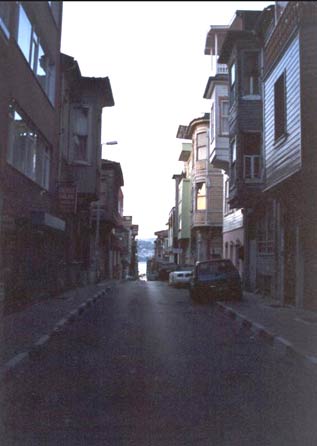 Some of the artists as well as some
supporting statesmen protested this proposal by using posters and banners
with the intention of voicing their rights and reactions against the third
bridge, obviously. Film
stars Müjde Ar, Hülya Koçyiğit, Rutkay Assize, Beyazıt Öztürk,
writers Orhan Pamuk, Latife Tekin, journalist Zeynep Göğüs
were stating their solidarity with the Arnavutköy residents. Some of the artists as well as some
supporting statesmen protested this proposal by using posters and banners
with the intention of voicing their rights and reactions against the third
bridge, obviously. Film
stars Müjde Ar, Hülya Koçyiğit, Rutkay Assize, Beyazıt Öztürk,
writers Orhan Pamuk, Latife Tekin, journalist Zeynep Göğüs
were stating their solidarity with the Arnavutköy residents.
-
Thus the protest marked the first time in
modern Istanbul history that residents rose up publicly against the
government. Moreover,
people assisted the residents in Arnavutköy and in Istanbul instead of the
state as soon as they learnt more information about the consequences of
proposed bridge. So, mass media was
more interested in local problems.
-
As to what the mass media both in Turkey and
in foreign countries did about this protest, The Washington Post (2001) and
The New York Times (1999) expressed the importance of the local initiative
group with an article. Similarly, ICOMOS (International Council of Monuments
and Sites, 2002) published a report explaining the threat. In addition to
them, Turkish media contributed to this protest with supporting news.
At a different level, Robert
College Alumni Association (2000) deemed worthy Arnavutköy Local Initiative
Group for the Kriton Curi Environment Rewards.
RESULTS
-
The oral history research of
Arnavutköy has suggested that the social transformation that has been
affected through years with number of stages migrations and emigrations in
Arnavutköy has influenced all social lives and relationships in the
district. According to a census
conducted by the Ferry-boat Company (Şirket-i Hayriye) at the beginning of
the 20th Century, it indicates a dramatic change of ratios between Christian
and Muslim populations. At the beginning of the 20th Century whereas there
were 9 Christians to 1 Muslim, at the end of the century it became 19
Muslims to 1 Christian. The significant movements of people in the 20th
century were realized through mutual agreement of two governments in July
1923.
-
According to the interview
conducted with individual interviewees in the presence of the research
group, it points out that first dwellers of Arnavutköy yearn for their past
time, habits and relationships with people in Arnavutköy with no ethnic,
religious or ideological problems.
-
Another point that this
research project demonstrates is that Arnavutköy is still a unique district
that can easily be united on a subject to protect their village against the
treat of constructing a third bridge across the waterway. While the District
Initiative of Arnavutköy was composing, the citizens of Arnavutköy became
aware of that their most important inheritance in their lives was the
history of their old neighbourhood.
DISCUSSION
-
Although Arnavutköy has been a
historic and multi-ethnic suburban neighbourhood for many years, in the past
Arnavutköy’ s dwellers has succeeded in living together in the same area
several years with any ethnic or religious controversies.
Therefore, it seems that it is not only a
dream that people can live in peace.
Arnavutköy is a visionary
example for the global world.
-
Recently conducted to protect
Arnavutköy, the District Initiative of Arnavutköy has improved the
relationships of inhabitants. In
addition, they have just achieved in their major goal to some extent with
the underwater tube pass. However, this does not mean that their fight
opposing the third bridge project of the government has finished.
-
Nonetheless, the government
should take required measures to protect the natural form of the
architectural construction of Arnavutköy as its cultural richness, and
everybody should pay more attention to the importance of cultural and
architectural fabric of historical places such as Arnavutköy so as to retain
its natural form for the future and next generations.
2003 –
2004 TERM PROJECT
INSTRUCTOR:
ZELİHA GÜLÇAT
CONTRIBUTORS:
-
TUĞBA
ATMACA
-
AYŞEGÜL
DOĞAN
-
ZAFER DOĞAN
- SEDA
GEZGİN
- EMRE
İLHAN
BIBLIOGRAPHY
- Alemdar,
Nigar. “Facts”. 21.01.2003. 2/4. On-line. Internet.
- Ekinci,
Oktay. “Koprulere Otobus Yolu Onerisi”. Cumhuriyet. 15.09.1997.
- Gumus,
Korhan. ”Kentsel Muhalefet.” Radikal. 14.03.1999.
- Guvemli,
Ozlem. “Arnavutköy Icın Kabus.” Cumhuriyet. 31.05.2002.
- Kınzer,
Stephen. “A New Bridge? Not in My Backyard!” The New York
Times. 06.02.1999.
- Moore,
Molly. “Historic Homes Torn by Times in Istanbul.” Washington Post.
27.08.2001.
- Turkey. The
Minister of Public Transportation. The Marmaray Project. 1999.
| |
|
